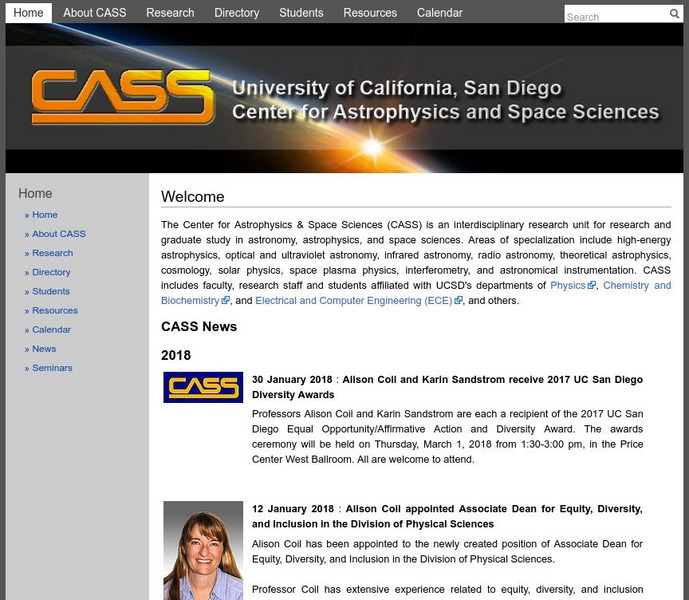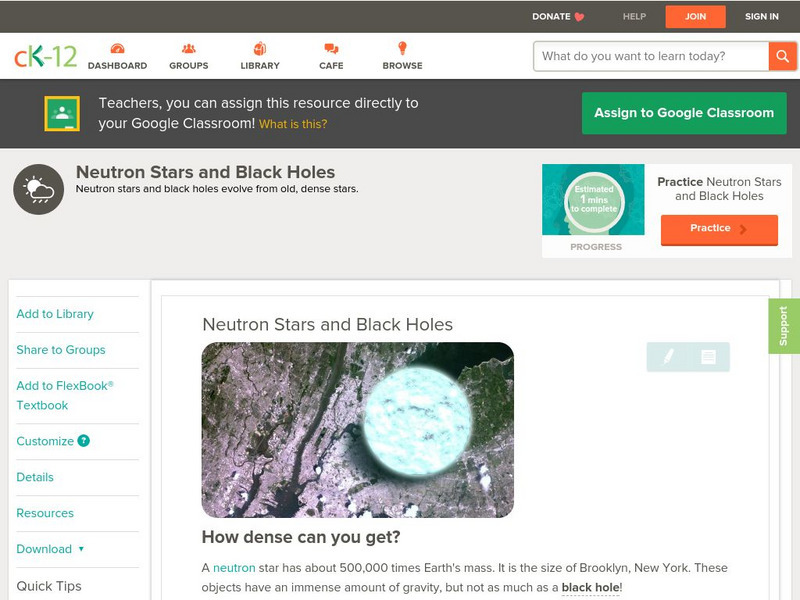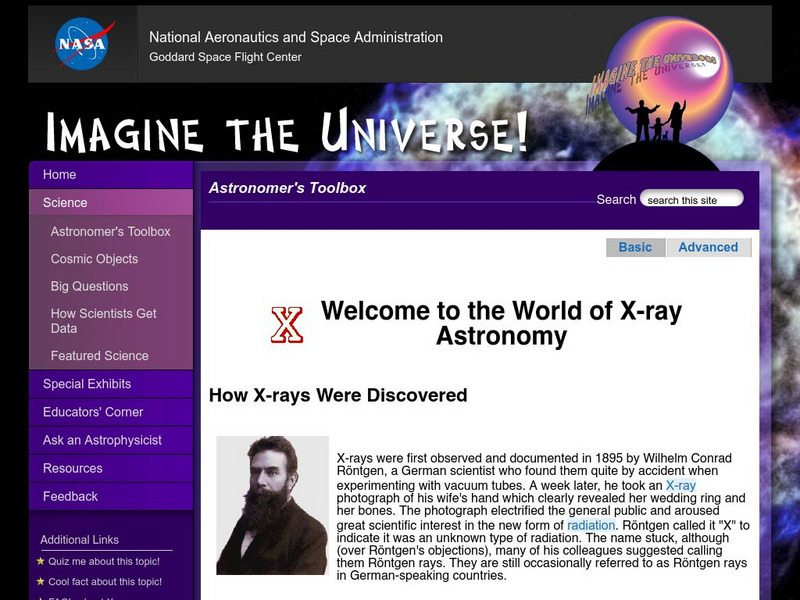University of California
University of California:center for Astrophysics & Space
Supernovae, neutron stars, and pulsars are topics on this page. Extensive section on pulsars that presents information on their discovery, characteristics, evolution, and location.
Cornell University
Cornell University: Astronomy: Frequently Asked Questions
Definintions for pulsars, millisecond pulsars, the evolution of pulsars, neutron stars and "Black Widows." Features related links.
NASA
Nasa: Astronomy Picture of the Day: Crab Nebula and Geminga in Gamma Rays
Explains that pulsars would be the brightest objects in the sky if we could see gamma-rays.
Famous Scientists
Famous Scientists: Antony Hewish
Learn about Antony Hewish, a radio astronomer who won the Nobel Prize for Physics for his work on the development of radio aperture synthesis and its role in the discovery of pulsars.
NASA
Nasa: Imagine the Universe: Imagine the Universe!
This helpful site provides everything you want to know about studying the universe. Take a look at the tools and methods scientists use to study the universe, discover some of the objects that make up our universe, learn how scientists...
NASA
Nasa: Imagine the Universe: Supernovae Remnants
A brief description of supernova remnants with many embedded links to help define terms used in the description. The specific topics are age and the importance of remnants to us and the types. Definitions of key words are provided.
CK-12 Foundation
Ck 12: Earth Science: Neutron Stars and Black Holes
[Free Registration/Login may be required to access all resource tools.] Explains the characteristics of neutron stars and black holes.
NASA
Nasa: Imagine the Universe: Welcome to the World of X Ray Astronomy
Site recounts how X-rays were discovered as well as who discovered them. Offers graphics, links to facts on this topic, a quiz, and teacher resources.
Famous Scientists
Famous Scientists: Jocelyn Bell Burnell
Learn about the life and scientific contributions of Jocelyn Bell Burnell in this article.
NASA
Viewing the Violent Universe: What Are Gamma Rays?
The universe produces a broad range of light, only a fraction of which is visible to our eyes. Gamma rays are nonvisible light, which also includes x-rays, ultraviolet light, infrared radiation, and radio waves.
Other
American Institute Physics: Quark Stars
Collapsed stars, between white dwarfs and black holes, can be studied as quark-gluon masses, or quark-hyperon groups. Extreme pressures lead to extreme states.
NASA
Nasa: Imagine the Universe: Gamma Ray Astronomy Satellites and Missions
"We present the many satellites which have detected electromagnetic radiation through the 1960s, 70s, 80s, and 90s." Visit this site to read more about the development of satellites throughout the history of gamma-ray astronomy. Graphics...
Curated OER
Science Kids: Science Images: Neutron Star
A Hubble Space Telescope photo of a rapidly spinning neutron star, also known as a pulsar.











